

PBM-5A Mariner
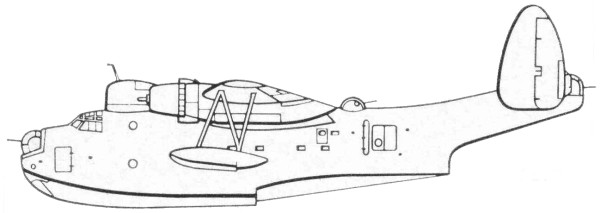
The Martin PBM series began with their design of Model 162 in 1937. In June of that year the Navy placed an order for one prototype designated XPBM-1, followed in December with another for twenty PBM-1's. The XPBM flew for the first time on February 18, 1939. The first PBM-1 which was similar to the prototype flew on September 1, 1940. The main difference from the prototype was the addition of a dihedral on the horizontal tail surfaces. The PBM-2 was to have been a long range version fitted with an increased fuel capacity, but this version was never built. Contracts placed between November of 1940 and August of 1941 called for 379 PBM-3's and 180 PBM-4's however neither version was delivered to the Navy in its original form.
The PBM-3 varied from the -1 in having enlarged, non-retractable floats, more powerful engines, lengthened engine nacelles and revised armament. The first 50 machines were completed as transports under the designation PBM-3R and delivered to the U.S. Naval Air Transport Service. These had their armament deleted, strengthened cargo floor, cargo loading doors and facilities for loading and handling cargo. Twenty passengers or a corresponding load of freight could be carried. The first reconnaissance-bomber version to be built in numbers was the PBM-3C, which began to appear in September of 1942. Surface radar was later installed in a large housing just aft of he flight deck. 272 -3C version were built then production was switched to the -3D of which 201 examples were built. The -3D version had increased horse power engines (Wright R-2600-22 of 2600 H.P.) driving 4 bladed props in place of the previous 3 blade. Apart from 330 gallon auxiliary fuel tanks which could be installed in the bomb-bays, all the fuel tanks were self sealing. Armor protection for the crew was increased and the power operated turrets each housed two 50-caliber machine guns with an additional 50 caliber being mounted in each beam position. The engine nacelle bomb bays could house 8 1,600-lb., 1,000-lb., or 500-lb. bombs or 12 100-lb. bombs, alternative loads being 8 650-lb. or 325-lb. depth bombs or 4 MK 13 mines. Two MK 13-2 torpedoes could be carried under the wings.
The final wartime production version was the PBM-5 with R2800-34 engines rated at 2,100 H.P. The 2 XPBM-5 prototypes had flown in May of 43 and the order for production units placed on January 3, 1944. The PBM-5 was faster than the earlier Mariners. With a 4,000-lb. bomb load it attained a range of 2,480 miles. Defensive armament was similar to the -3D version. 589 were delivered to bring wartime production to 1,289 machines and to these were later added 36 examples of a post war development the amphibious PBM-5A
The Kit
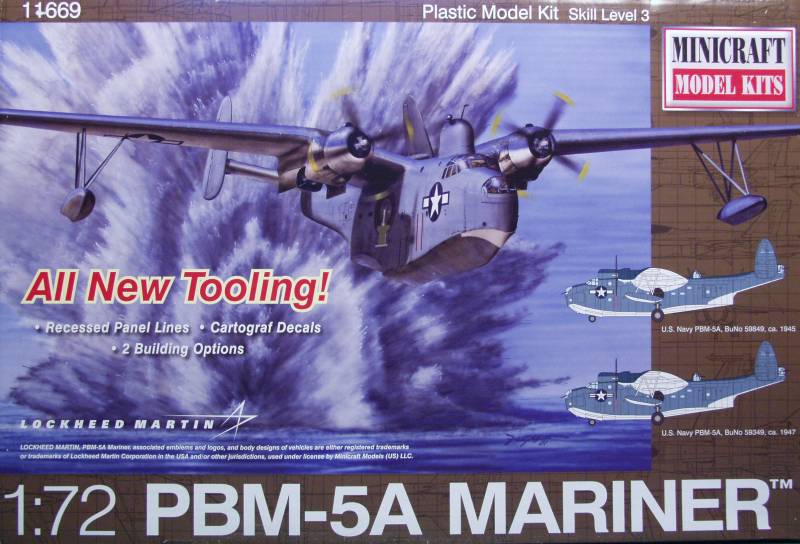
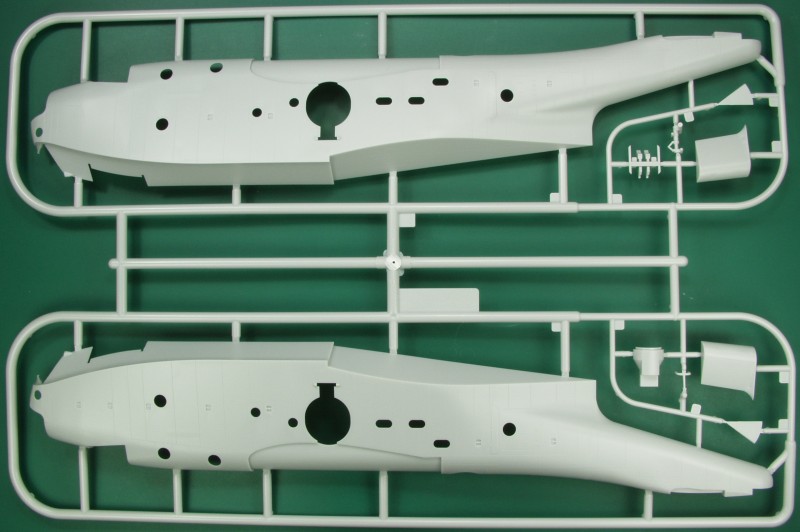
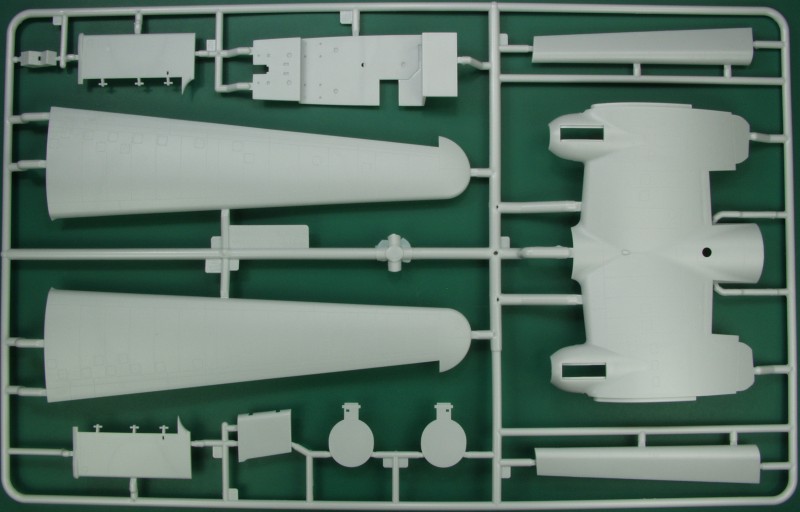
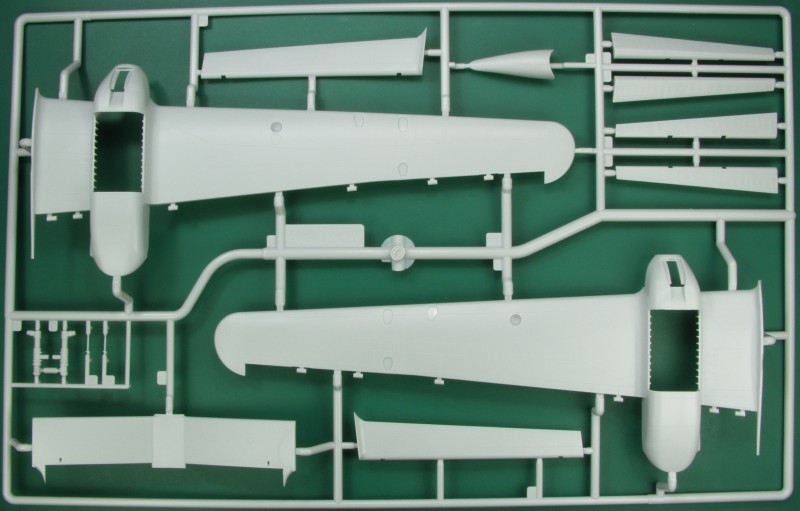
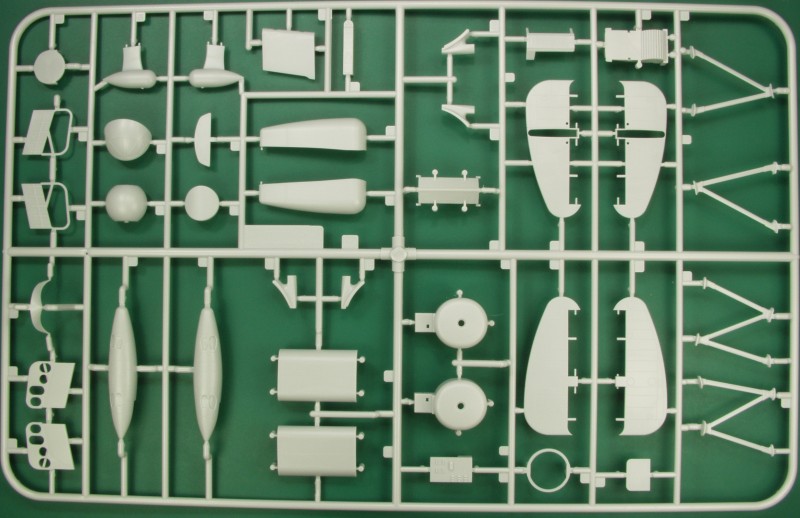
There are two of the sprue shown below.
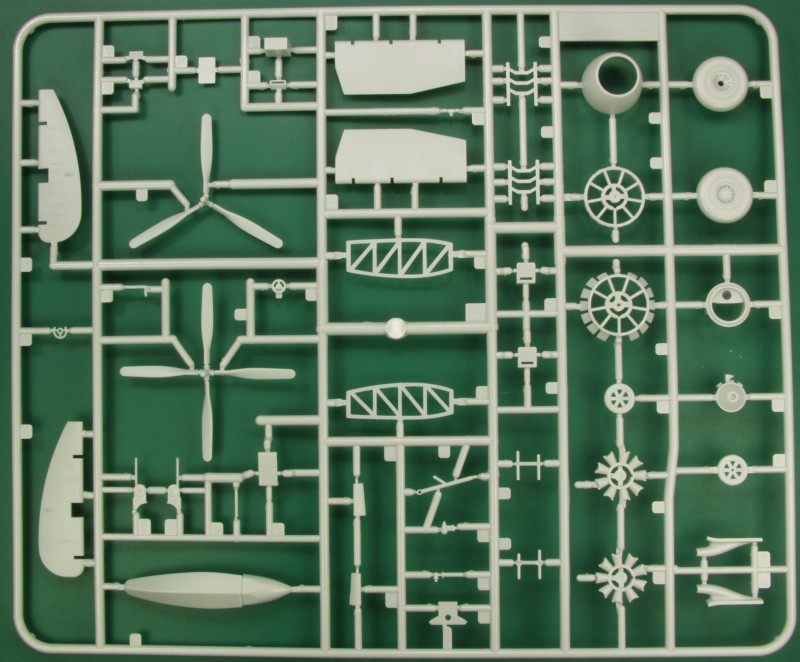
Clear parts are thin and at least the cockpit canopy is
clear and distortion free, the other parts are clear enough but do have
some optical distortion.
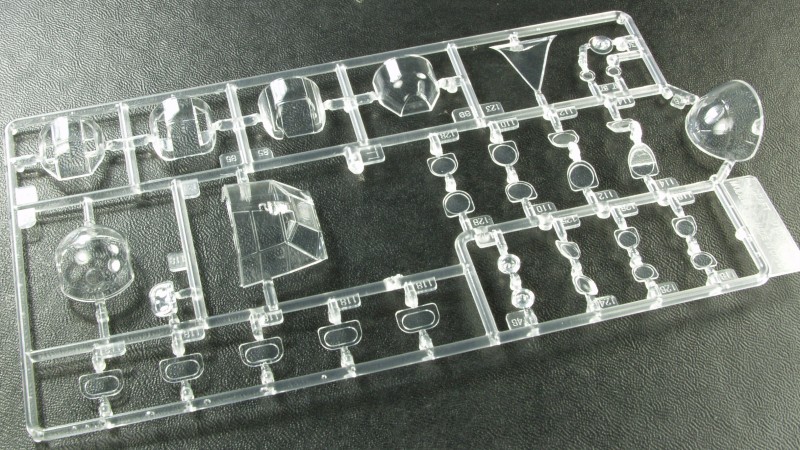
The decals are
from Cartograph which means excellent ! Everything is in register,
opaque and with minimal clear film. There are markings for two
aircraft, one from 1945 and one from 1947 with the only difference
being bureau numbers and the red bar in the national markings. No
other squadron markings and both are in tricolor markings. OK I guess
but a bit lack luster.
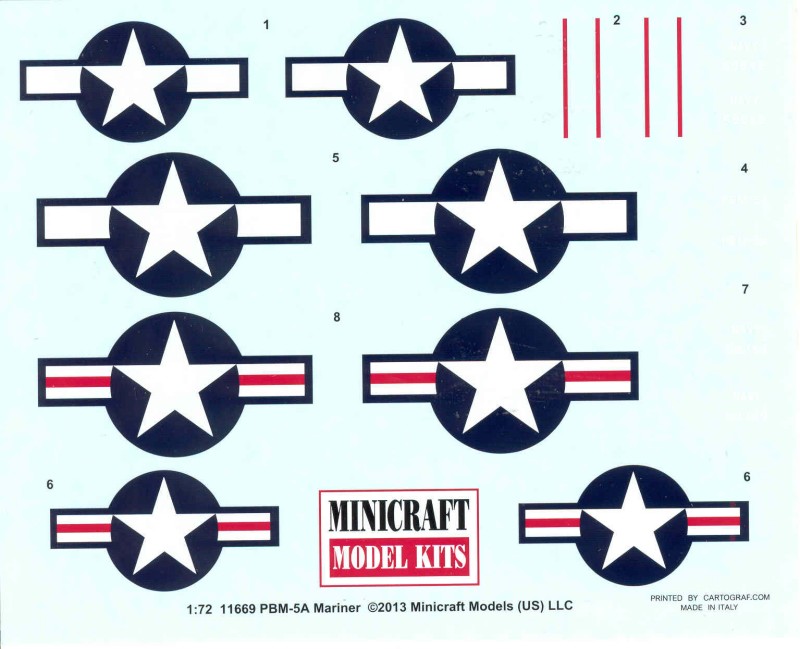
The instructions are a twenty two page booklet in an A4
size. The front page has a brief history. The next seven pages are parts
maps with notes at the end concerning building options. the next page
starts with an icon chart then the assembly diagrams start and cover the
ten pages in 26 steps. The last two pages are painting and marking
instructions and the back page has some basic decal application
instructions. The assembly diagrams are large and easy to read and
feature color call outs by generic names and FS numbers if applicable.
After Market Goodies
Due to the rather bland markings supplied with the kit I decided to pick up some after market decals from Caracal. The sheet provides markings for two PBY-5A's, two PBM-5's and a PBM-5S. Both of the PBM-5A's are overall dark sea blue, as is the PBM-5S, one of the PBM-5's is flat black overall and the one is in the tricolor scheme. The decals are thin, in register and opaque but have more clear film than the Cartograph decals. Since there were only 36 of the 5A's produced markings are some what limited.
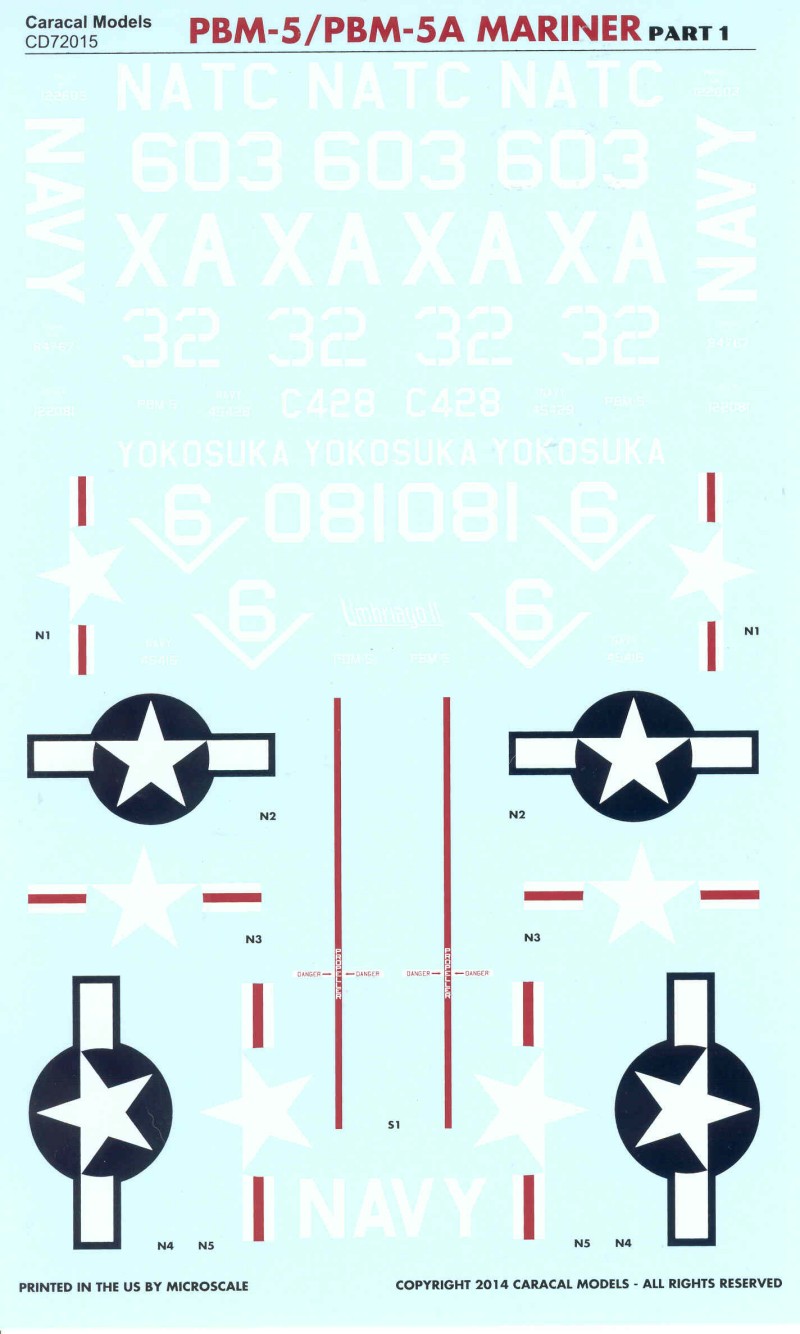
I also opted for an Eduard Zoom photo etch set to dress up the interior a bit, it does include a few parts not included in the kit.
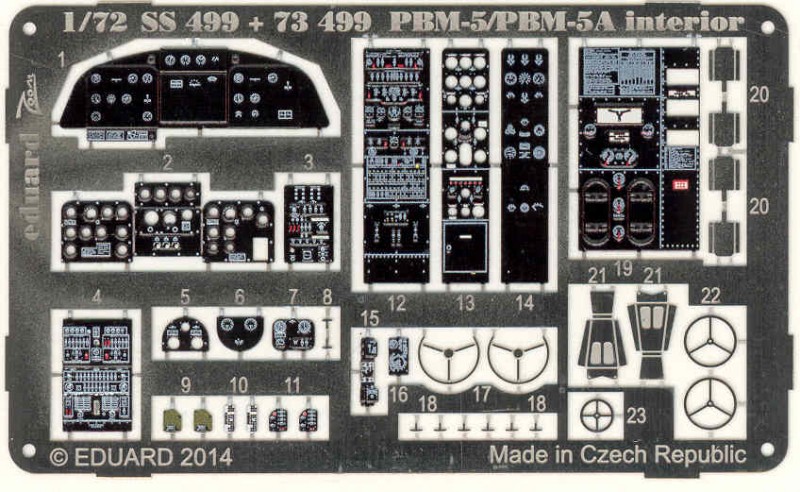
I also got Eduard's seatbelt set, which I find a bit aggravating that these couldn't be included in the set above.
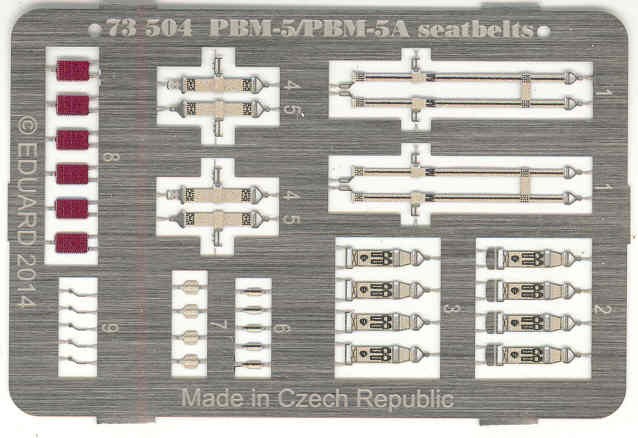
Conclusions
This
kit was on Minicraft's list of coming new products for many years before
finally being released. Had I known they were going to release a PBM-5
so soon after the -5A, I would have waited as there is a much larger
choice of markings for the -5 including war time use. There is little
difference appearance wise between the two other than the landing gear
so I will most likely build this kit. It is a quite nice kit with nice
surface detail and a reasonable amount of interior detail for the scale.
Over all reports indicate that the fits together well with a few
exceptions. It should be anything a competent modeler can't handle. The
quick build review listed below illustrates a number of the problems and
suggests fixes. The build review shows how one modeler dealt with the
issues. Over all I give it high marks. It certainly is many times better
than the old Mach 2 kit. Recommended !
Links to kit build or reviews
An in box review can be found here, a quick build to check for fit and problems can be found here and a build/review here.
References
"War Planes of the Second World War Volume 5, Flying Boats" by William Green
"Martin PBM Mariner" by Steve Ginter
"PBM Mariner in Action" by Bob Smith, Squadron / Signal publications Aircraft # 74
Updated 12/12/17